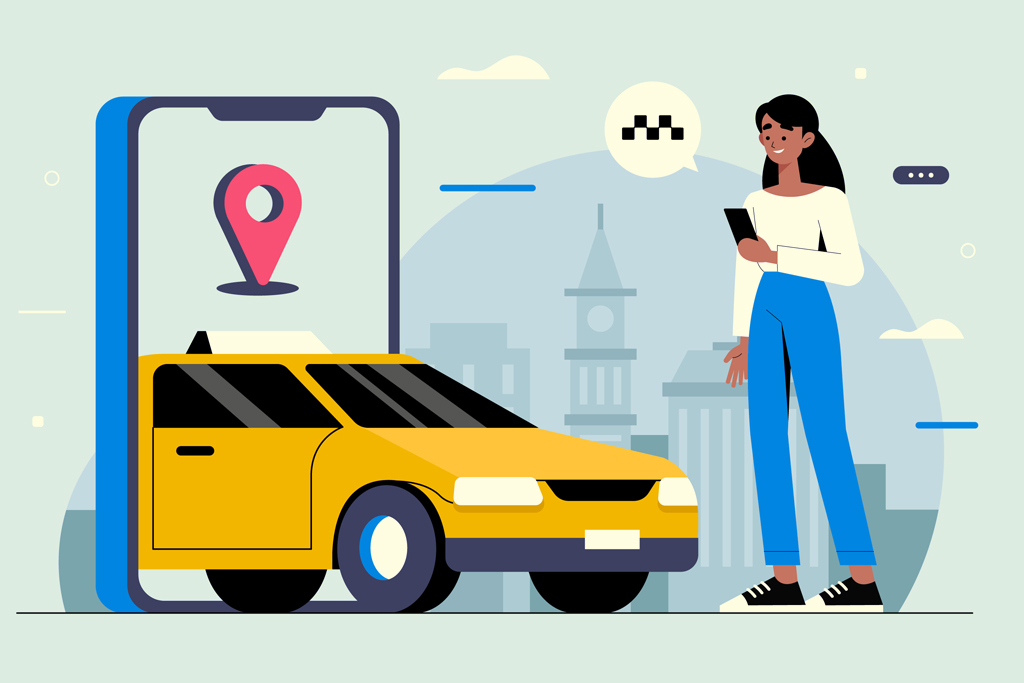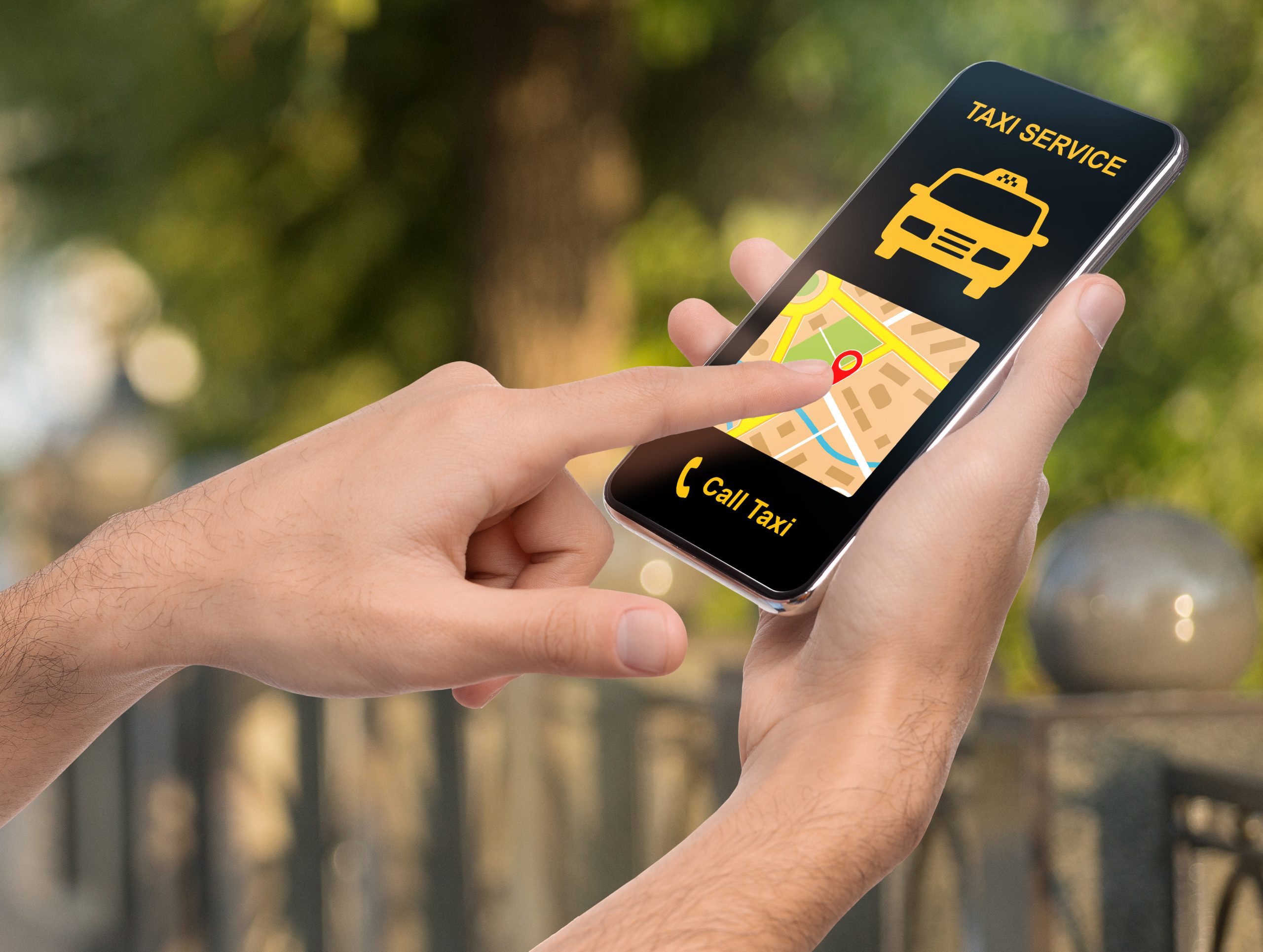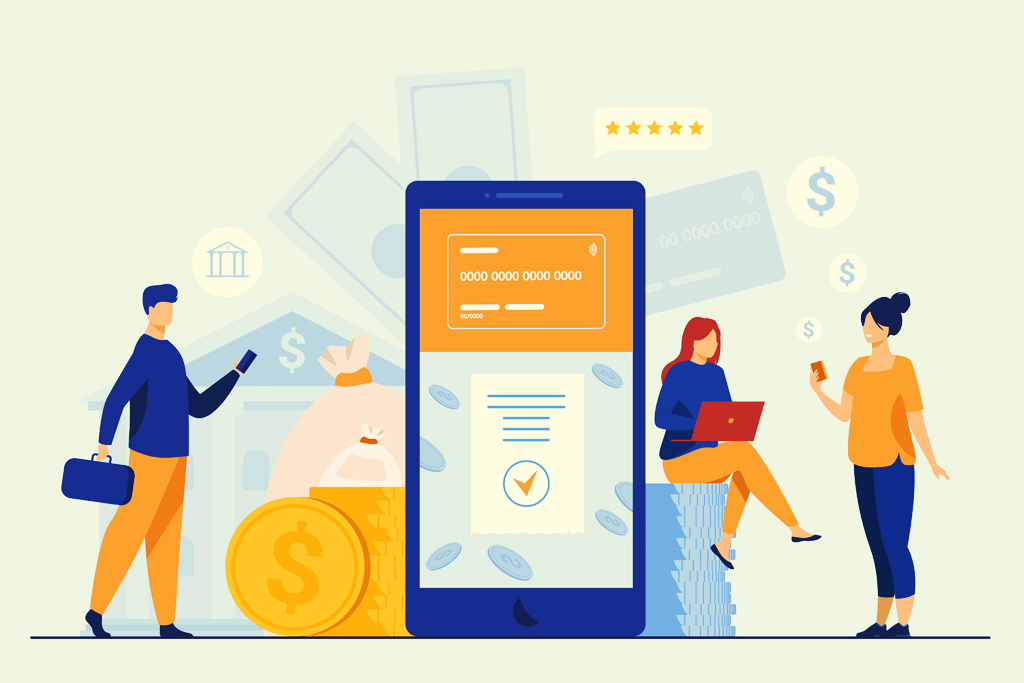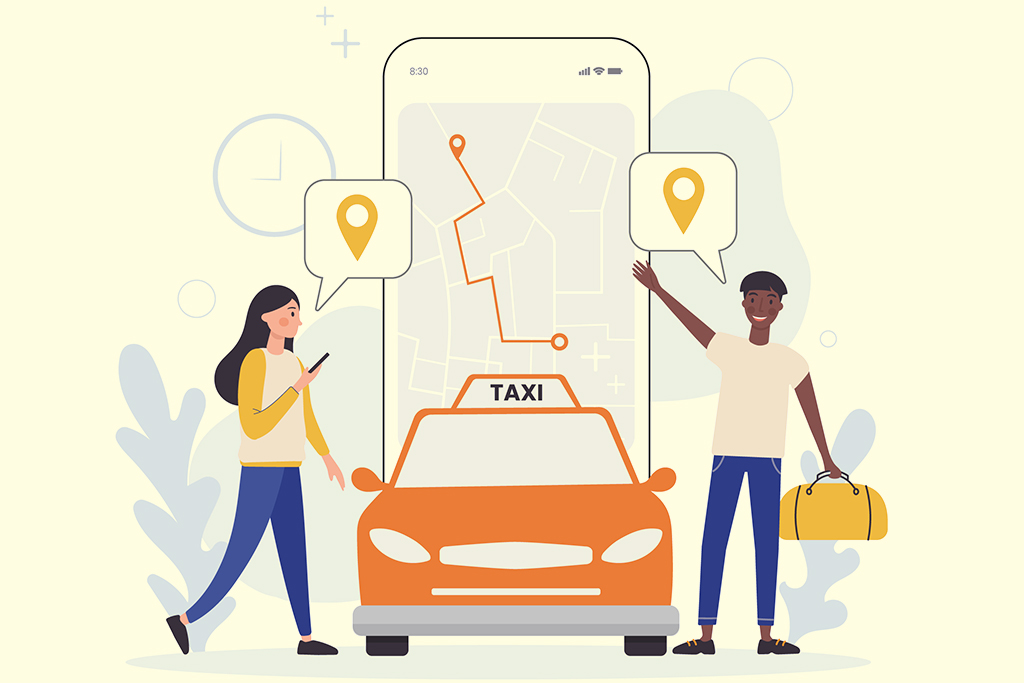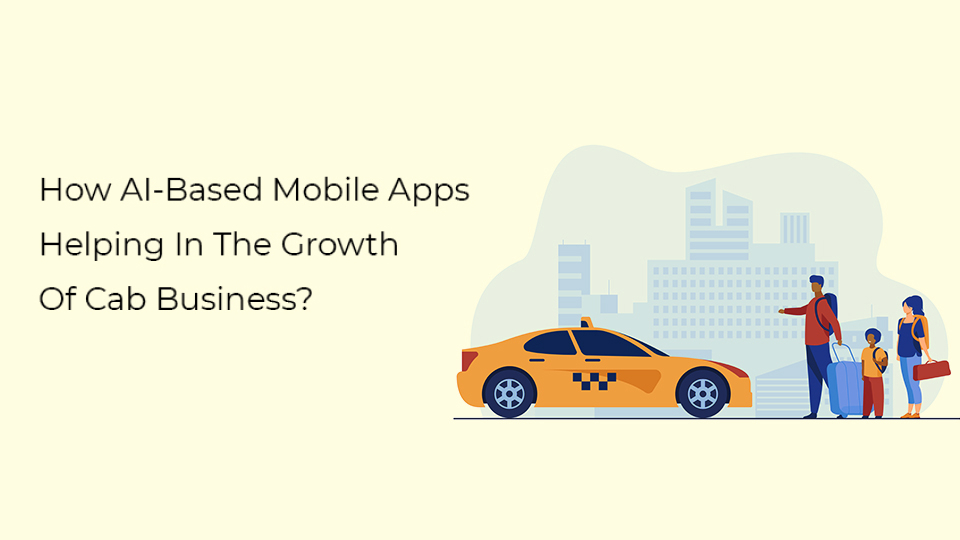
How AI-Driven Cab Management Software Is Turning Into A Disruptive Integration?
In 2018 something happened in the ride-hailing industry as Sony Corp announced partnering with 5 cab-hailing services in Japan to launch an AI-enabled system – this includes Green Cab Co., Ltd., International Automobile, Kusumi Transportation Corporation, Daiwa Motor Transportation Corporation, Checker Cab Radio Cooperative Association, and Hinomaru Transportation Corporation. Since then the cab industry has seen no-turning-back. Lately, in 2020 Uber too announced the launch of all-new AI-Driven cab management software.
“As per the latest report released by Goldman Sachs, the estimated worth of the cab-hailing industry will be $285 billion by 2030. Well, they are estimating the global taxi market at $108 billion, which is almost three times the size of the $36 billion ride-hailing markets.” (Marketwatch)
Artificial Intelligence is everywhere today. From smartphone to global search algorithms. AI is hell-bent on changing the way we interact with technology – simplifying decision-making and making enterprises enhanced for the end-users.
To hail a cab on the app is the new cool. Who does not love when they don’t need to explain the address to the taxi driver, stay alert in fear of missing the turn or fight cabbies who refuse to go. Amidst these AI is like the double-edged sword giving the cab booking software the push to tap the potential which still remains ignored.
Let’s dive into a few case studies and check the benefits which this cab dispatch software seems to equip with artificial intelligence.
Why Choose AI? How It Makes Business Easy-Peasy?
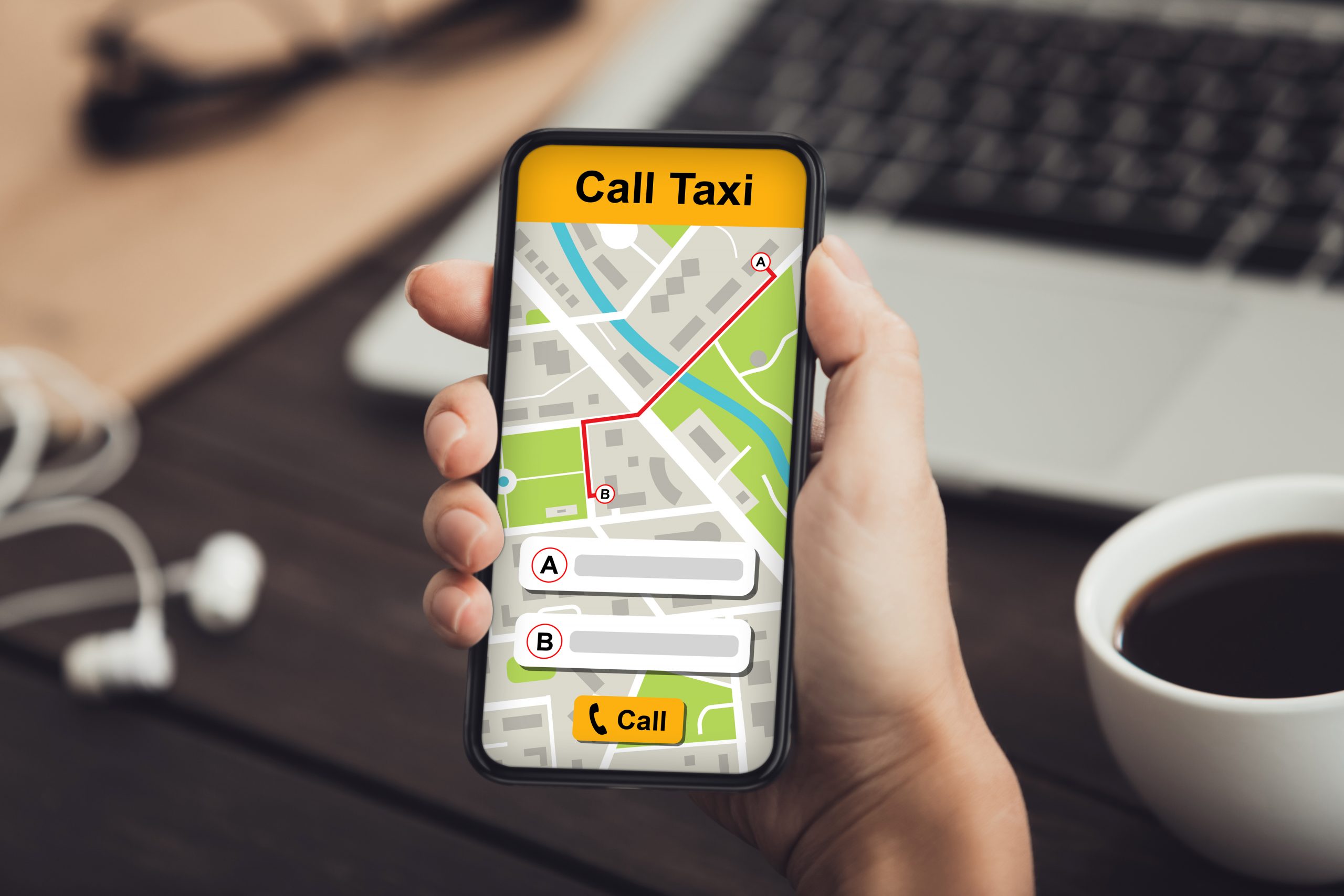 Traditional taxi businesses are hanging on the thin line due to the cab dispatch software apps like Uber or Ola. With the on-demand bubble on the verge of the burst, more and more entrepreneurs are bent on investing in private cab app development.
Traditional taxi businesses are hanging on the thin line due to the cab dispatch software apps like Uber or Ola. With the on-demand bubble on the verge of the burst, more and more entrepreneurs are bent on investing in private cab app development.
Related read: IoT In Transportation And Logistics- Major Trends Of 2020
However, with the AI-powered taxi cab software, even the traditional taxi business can make a comeback. Why so?
- The use of AI removes human-error and helps to integrate it into complicated data-related processes and make game-changer taxi apps.
- Due to this, it has become easier to build cross-platform apps. Ai is helping to bring all the specialized skills together under one setup and at a cost-effective price.
- AI made it possible to map the actual streets through visual aids so doing away with traffic jams, diversions, and finding the short route to optimization.
How AI Impacts Cab Booking Software?
The cab management solutions care mostly about three signposts – cost, convenience, and speed – and hence these on-demand apps were a huge hit.
1.Convenience: When it comes to convenience, artificial intelligence brings all the processes under a centralized cloud network to gather real-time information. Through these single systems, all the processes like dispatching, communication, real-time service, and payment stay integrated. The cab booking software also provides features like on-time pickups to prompt notification on driver details, ETA or estimated time of arrival, and trip management.
Related read: Impact of IoT on Private Cab App Development
2. Cost: When it comes to cost the payment algorithm built on AI or IoT makes it more compact. They have introduced the dynamic pricing strategy to get on with the high-demand and generate more revenue in peak hours. However, determining the short-term pricing is always a challenge for all ride-hailing apps. But with AI setting the price which exactly meets the demand with AI algorithms has become easy-peasy.
3. Speed & Safety: When it comes to safety and speed, the cab companies are trying to work on bridging the gap between the passengers and the drivers with the help of a single point of communication, licensed drivers, and call masking. With the use of AI, the future cab management solution will be able to check the fuel capacity, tire pressure, and other features that can be checked in real-time with the use of AI.
Better services and efficiency is what the use of artificial intelligence is trying to built-in. Let’s see the benefits they are trying to leverage and how the cab-hailing businesses are driving or will drive profits out of it.
How to Leverage Better Experience with AI-Driven Taxi Apps?
 Integration of AI in the processes of on-demand services brings a fair share of benefits to the service providers. The use of AI reduces wait for timing for the passenger and improves the earnings for drives. A win-win situation for everyone. And let’s see what are the potential uses cases to keep in mind while building an AI-driven private cab app development:
Integration of AI in the processes of on-demand services brings a fair share of benefits to the service providers. The use of AI reduces wait for timing for the passenger and improves the earnings for drives. A win-win situation for everyone. And let’s see what are the potential uses cases to keep in mind while building an AI-driven private cab app development:
1. Real-Time Predictive Analysis
Artificial intelligence and predictive analysis come together to help in analyzing the historical data effectively. The use of data mining on the historical data alongside helps the cab startups to build powerful on-demand and predictive algorithms.
Correlating with the historical data and predictive analytics demand can be easy to predict in real-time. This means shorter waiting times for the passengers and better meaning abilities for the drives as said earlier.
2. Route Optimization
 With AI-powered on-demand taxi dispatch software it is easy to optimize the routes and availability. The use of reasoning algorithms that can be integrated into the app to derive accurate optimization to save time and reduce the chance of getting stuck in unnecessary traffic for long hours. Even the route optimization also helps drivers to choose the fastest route to the passenger’s destination.
With AI-powered on-demand taxi dispatch software it is easy to optimize the routes and availability. The use of reasoning algorithms that can be integrated into the app to derive accurate optimization to save time and reduce the chance of getting stuck in unnecessary traffic for long hours. Even the route optimization also helps drivers to choose the fastest route to the passenger’s destination.
With the use of reasoning algorithms, sourcing data from the movement of the drivers on the same routes helps to analyze the shortest time and easy direction. The app will provide real-time suggestions that help to navigate easily and improve their efficiency.
See how ResearchGate adds a clear theory on how to optimize routes and integrate them to better work AI and Predictive Analytics.
3. Automated Dispatch System
This is quite an interesting use case and the most important feature to be integrated with an AI-powered cab booking software. With the use of pattern recognition and data mining, taxi startups can reduce the chance of human error. A number of times, if the system is not automated it can lead to longer waiting times for end-users and often leads to bad experiences. Using AI in a taxi cab dispatch software to simplify data analysis and mobilize resources to help taxi startups deal with dispatch problems and ensures standard dispatch times and quicker turnarounds.
4. Personalized User Experience
Personalization is something that most businesses are bothered about. Consumers love the personalized experience. And if they love it, we provide it. (That’s the first rule of customer experience theory – what your customers love, make it.) When you are thinking of building a cab management solution, AI capabilities can help to gauge your customers in a better way and will offer a remarkable experience.
Just as the eCommerce startups take note of the history of browsing choices and purchases, AI can smarten the experience for the taxi app users too. With the use of data analytics users on every ride get smart choices pertaining to their most-visited location, ride type, and other personalization options. All this adds up to make a great brand image in the mind.
Related read: 7 UX tips to design better taxi apps
5. Take Smarter Business Decisions
Data is the new gold. And with artificial intelligence, you can create meaningful connections and produce actionable insights. With the use of AI-based prediction and data analysis, the taxi apps can generate an in-depth understanding of their core operations and drive data-backed decisions. These data can be used to understand consumer growth, operational issues and take scalable decisions with confidence.
6. Decrypting Rider Psychology
A technology that can analyze a person’s mindset? Well, artificial intelligence is definitely doing that in a really effective manner. They understand consumer psychology, their ride patterns, usage history, payment modes used and schedule give a lot of insights to find the ideal customers. This would help the cab startups to understand their customer better, creating rich data-powered user persona and target them with effective marketing endeavors.
7. Smarter On-Boarding Process
The automation quotient is limitless and more about convenience. Not only the riders, but AI can also help the private cab apps develop and streamline the on-boarding experience for drivers too. AI is easy to integrate into the form of a chatbot with answers to common questions or
AI-Driven cab management solution and training modules can be shared whenever a driver is stuck in a situation. Such a feature will delight the drivers and create empathy for your brand. It will motivate more drivers to connect and grow your taxi network organically with other operational benefits.
8. Cutback in ETA
ETA or expected time arrival is considered as soon as you book a ride. It is frustrating when much time is wasted in the long traffics in urban cities. The situation worsens when the cab takes longer to arrive. The AI addresses the issues that cab apps utilize by forecasting demands and decreasing ETAs.
The cab management software is trying to make the experience better. You can go through this recent study on Uber that comes with the example of flawless fusing of customer satisfaction, and other profitable services that lead to huge disruption in Uber.
9. Single-Click Communication
A rider used to message the drivers while waiting for their cabs. Even at times, the riders do this to know the location of the cab and when will it be at his or her pickup location. But on the same note, this is not easy for the drivers to reply to the messages while they drive. Hence, the cab management solutions are using frameworks like one-click-chat that use Natural Language Processing and Machine Learning to make answers for common messages. This is the only way cab drivers can respond to the queries of customers with suggested responses.
Case Study of Cab Apps Powered by AI
At the beginning of this blog, I mentioned the sparkling news of Japan’s taxi businesses. Well, the case study is going to highlight how Toyota, JapanTaxi, KDDI Corporation, and Accenture have formed a four-way collaboration in Japan with the objective to integrate AI in the taxi business. The venture resulted in the successful development of cab dispatch software that can predict taxi services in real-time.
The system combines data sourced from taxi service logs with geo-predictions curated by the location-based data along with the factors affecting taxi demand such as weather conditions, availability of public transport, etc. A recent trial has shown that 94.1% of taxis in Tokyo show accuracy in their predictions.
Each company is performing a specific role. Toyota collects and analyzes the data and provides the prediction data to JapanTaxi. The latter develops the app which provides this data to the drivers. It also collects information pertaining to the location of unoccupied taxis, service logs, and the easiest routes to find the passengers. KDDI develops a geo-prediction technology that studies people’s movements based on the KDDI’s location-based big data. Accenture on the other hand develops the AI’s analytic algorithm to power the demand prediction engine. The research and knowledge are thus able to create accurate AI-Driven Cab Management Software
With an AI-driven cab management software system, it is easy to make accurate predictions for your taxi businesses to grow exponentially.
Is AI the New Favorite of Customers?
The use of artificial techniques and models has helped the cab apps to relocate the needle around multiple verticals. Ranging from maneuvering to transportation, customer assistance to navigation – the more you research on AI, it will yield the momentous augmentation and trade prediction to smoothen the pick-up experiences.
The undoubted reasons for the AI-driven cab management software to rise in popularity among customer already are:
- Fraud detection and clearer estimation of the risks
- New and ensured safety methods
- Grasping market consumption and distribution
- Meeting the drivers and demands with ease
- Better route-optimization and cab-drive onboarding
AI is able to fuse in the fresh air of sustained responses to customer queries. This not only improves the efficiency of the cab booking apps but also steadily hikes customer satisfaction.
Basically AI-driven cab management software is trying to understand the customers better, by obtaining their needs, reading their habits and preferences, and solving their problems quickly and in real-time. If you are trying to handle the customer segments in a precise manner – it is important for the private cab app development to sneak into the study of Customer Behavioral Analytics.
Wrapping Up
Artificial intelligence can definitely change the way people move around in the future days. And if you are still thinking that AI is not your cup of coffee or for your taxi startup, then you have a chance to fade away or turn into a walking dead in business.
AI is the future of taxi scheduling software. So if you’re after a private cab app development and want to harness the power of artificial intelligence, our experts are here to help. If you are keen on AI or Machine learning, let’s connect and explore the raging possibilities.
Inoltre i farmaci possono essere pericolosi, tuttavia, anche quando hanno lo scopo di migliorare la nostra salute
https://disfunzioneerettile.org/cialis-generico.htmlIn alcuni casi i consumatori arrivano al drugstore tradizionale per ritirare una prescrizione, ma poi mentre ordinano un rimedio costoso tagliano le pillole a metà quando scoprono che i prezzi dei farmaci non sono accessibili
https://disfunzioneerettile.org/viagra-generico.html
Ricorda che anche gli acquirenti più cauti non possono essere certi di ciò che ordinano dalla farmacia in Internet




